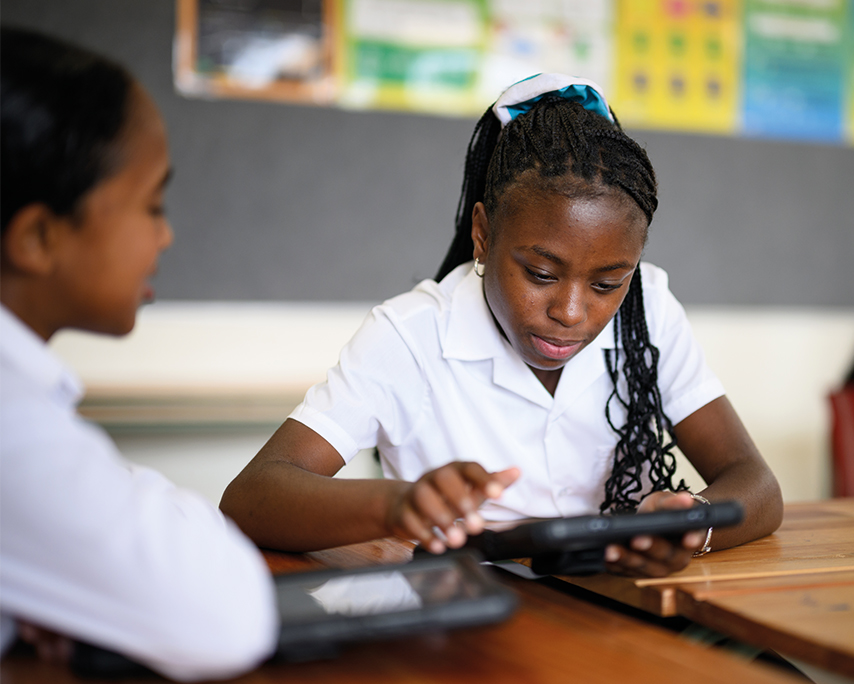International Girls in ICT Day
The importance of girls’ voices in technology-driven change
Empowering girls in Information and Communication Technology (ICT) must go beyond teaching them technical skills. It should also include giving girls a voice in how technology evolves and ensuring this same technology serves their best interests. ICT is more than just the technical aspects of technology. It is also about how people interact with it and the processes that shape its use. It involves a combination of technical skills, creativity, emotional intelligence, and social interaction, all of which are important for effectively using and influencing technology. As the world commemorates International Girls in ICT Day, it is a time to remind ourselves of the importance of creating literary works, such as articles, stories, or books, that focus on inclusive digital transformation, ensuring girls have more opportunities to engage with and shape technology.
These literary works present a unique opportunity for authors to explore the human-centred side of digital transformation. While the technical side of ICT is often the focal point in discussions about technology, how people interact with these tools and the processes that govern their use ultimately shape the success and impact of technological advancements. Girls’ perspectives and lived experiences are crucial, whether they come from a bustling urban school or a rural, internet-challenged village. Through stories, articles, or books, we can highlight how girls are not just passive users of technology but active participants in the ongoing evolution of the digital world. These works can serve as a platform for showing that girls must become artists, engineers, changemakers, and storytellers shaping technology’s trajectory.
It is essential to emphasise that empowerment comes from enabling girls to use ICT to solve problems and create, innovate, and challenge existing technological frameworks. Digital transformation is not merely about adapting to new tools; it is about reshaping how these tools are designed, ensuring they meet the needs of all users. By showcasing the journey of girls who use technology to address social, environmental, or community issues, these literary works can demonstrate how girls can leverage their unique perspectives to drive change. For example, a story might feature a girl who designs an app to connect remote communities with educational resources or one who uses digital platforms to advocate for environmental sustainability.
Empowerment, at its core, is not about using tools someone else built. It is about having the confidence and opportunity to redesign the toolbox. Digital transformation should not be limited to adapting to existing systems but rethinking those systems entirely. Whether it is a girl in Nairobi creating a mobile platform to support her community’s farmers or one in Guyana building a chatbot to tackle gender-based violence awareness, these stories show how girls use tech to challenge norms and meet pressing needs.
Inclusive digital transformation also requires recognising the diversity of girls’ experiences. Intersectionality, the idea that different aspects of identity, such as race, ethnicity, socio-economic status, and location, influence how individuals experience the world, should be an essential consideration in these works. Authors can highlight the unique challenges and opportunities girls face in different contexts by presenting stories of girls from various backgrounds. For example, a girl from a rural area may face obstacles in accessing the internet or ICT education but may use technology creatively to bridge that gap. Similarly, a girl from an underrepresented community in tech may work on projects to increase diversity in the digital sector.
Literary and storytelling works focused on inclusive digital transformation give girls the space to be seen, heard, and celebrated, not just as beneficiaries of tech but as its creators and critics. They challenge gatekeepers, inspire communities, and reframe what leadership looks like. It is time for decision-makers, educators, funders, and technologists to take note. Support these stories. Amplify them. Fund them. Include girls in every part of the digital narrative, from strategy rooms to storybooks.



